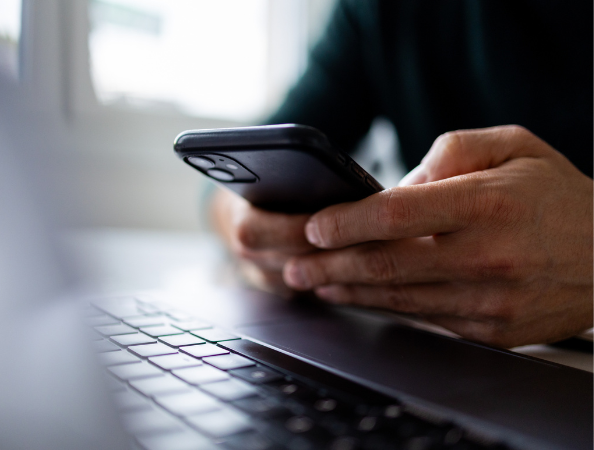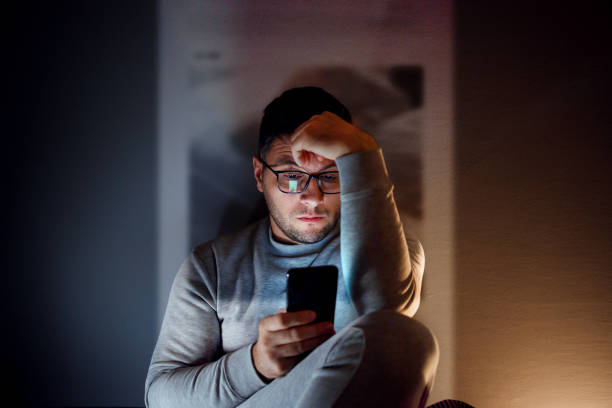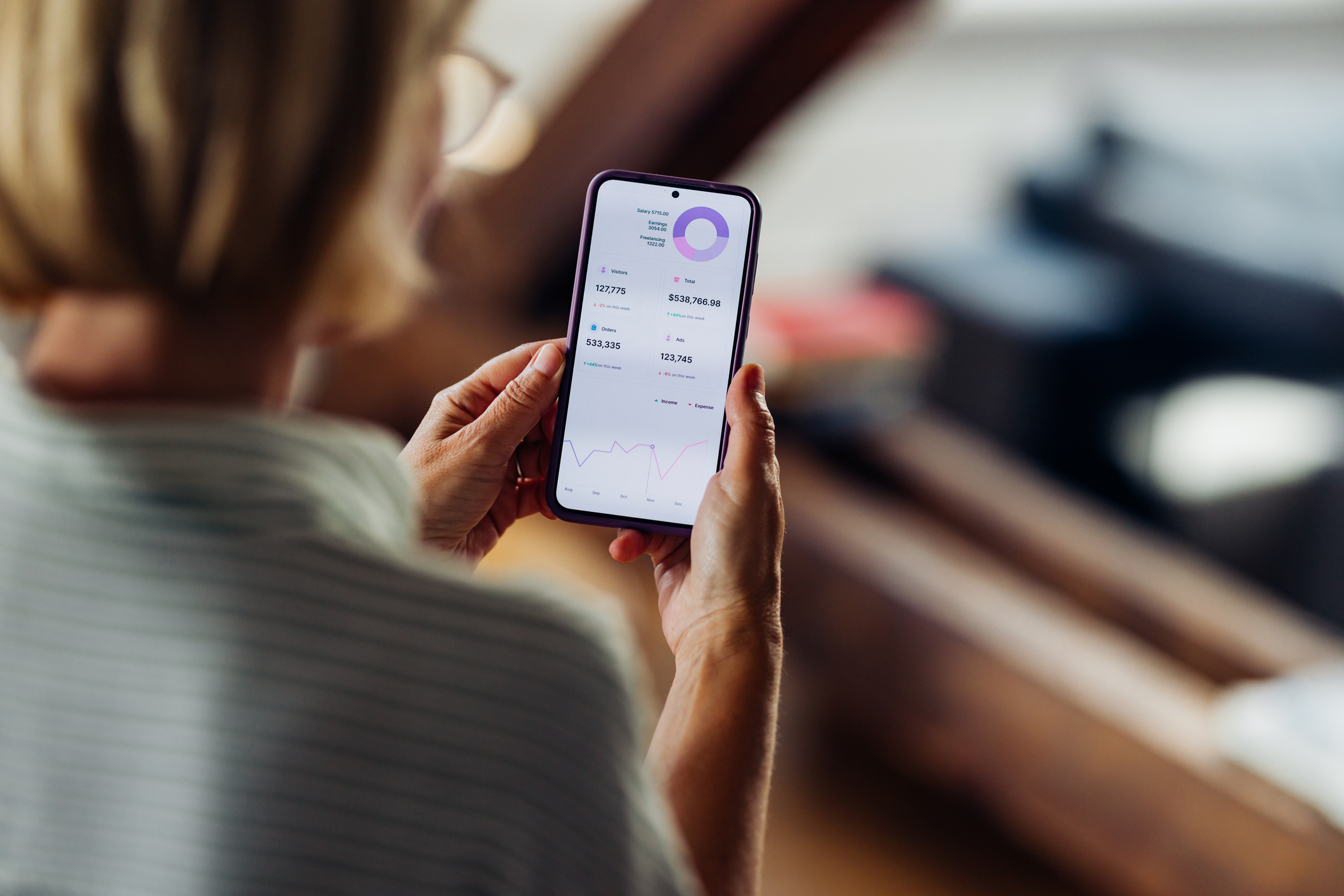More and more schools are banning cell phones in class: in Colombia, a report reveals their high use among students and its impact on learning.

A year ago, the Portuguese government issued a series of recommendations to public and private schools to ban smartphones in classrooms and during recess. The goal was to gather information to make the final decision to ban the use of these devices among elementary school students.

The ban on cell phone use in classrooms in Portugal reduced bullying. Photo: iStock
In early July, the Council of Ministers approved a decree-law that goes in this direction, after conducting and analyzing a survey of school principals, directors, and coordinators who voluntarily joined the proposal. The conclusions were that the ban reduced bullying, student fights, and indiscipline, while also increasing socializing.
The measure, extended to all institutions , will begin in September, when the new school year begins. Both public and private schools must implement it for students ages 6 to 12.
“There is growing evidence of the negative effects smartphones have on children's learning and behavior. It is the State's obligation to prohibit and regulate their use to protect them ,” said the Minister of Education, Science, and Innovation, Fernando Alexandre.
Portugal isn't the only country taking a step forward as a state in banning smartphones in schools. Brazil's Congress made this decision at the end of 2024, allowing cell phones only for educational purposes and in exceptional cases, such as accessibility needs or health issues. Finland followed suit this year through Parliament, but only banning devices in classrooms.

The Brazilian Congress has decided to allow cell phones for educational purposes only. Photo: iStock
France, Denmark, China, Switzerland, New Zealand, and other countries have also adopted similar regulations , based on the same premise: that screens are causing serious harm to minors during their development, learning, and socialization processes. The measures vary in the age range covered by students and the restrictions on their applicability, whether in classrooms or recess, or both.
What the studies say The Portuguese case is exceptional in that the government undertook the task of conducting an empirical test. To do so, it managed to involve 809 institutions (from childcare centers to secondary schools) , serving more than 1.3 million students. Some schools opted for a complete ban for students between the ages of 6 and 12, and partial restrictions for those between 12 and 18; while others limited their use in class, without banning cell phones altogether.
The survey findings were captured in a report by the Center for Public Policy Planning and Evaluation, which found positive results in both types of school participation. However, the experiences of institutions that completely banned cell phones were much more satisfactory. "There was an increase in socializing, use of playgrounds, library use, and physical activity compared to the previous school year (2023-2024)," the document states.
Analyzing the school cycles, as they are known in Portugal, in the second cycle, which includes students between 10 and 12 years old, the reduction in bullying was 59 percent. Fighting and indiscipline decreased by 57 percent. In schools that opted for partial restriction, fighting, bullying, and indiscipline decreased between 21 and 31 percent.

After the ban on these devices in Norway, girls showed improvements in math. Photo: iStock
But Portugal isn't the only case where banning cell phones in schools has proven successful. A study published last year by the Norwegian Institute of Public Health was able to calculate, using real and measurable data , significant reductions in mental health issues and bullying, as well as an increase in children's academic performance.
The study was led by Sara Abrahamsson, a postdoctoral researcher at the institution, who analyzed how these three factors (mental health, coexistence, and academic outcomes) changed in children attending schools where the decision was made to ban cell phone use in Norway, where there is no explicit ban, but institutions are given the freedom to restrict these devices.
The results of Abrahamsson's research, which covered 45 percent of all Norwegian secondary schools, show that for girls, the device restriction measure resulted in a significant decrease in the number of consultations, diagnoses, and treatment for psychological illnesses, from 29 percent (one year after the ban began) to 60 percent (after four years) . A similar trend occurred for boys, albeit at lower rates.
Regarding bullying, the ban led to a 46 percent drop in bullying reports over a three-year period. This downward trend is consistent with the results of another study in Spain, where bullying reports fell between 15 and 18 percent among 12- to 14-year-olds in institutions that banned cell phones.
Finally, in the area of academic performance, girls in particular showed significant improvements in mathematics, the only subject in which they tend to perform worse than boys in the Norwegian education system.
According to Abrahamsson, the research also found that “the magnitudes of all estimates are higher among boys and girls from lower socioeconomic backgrounds , suggesting that this particular group is distracted by unstructured technology in the classroom. Similarly, there are no negative effects of banning smartphones on students from higher socioeconomic backgrounds.”
The Colombian case In Colombia, there are currently no regulations prohibiting cell phones in classrooms. The Ministry of Education has stated in the past that schools have the discretion to take measures restricting the use of mobile devices.
Some schools in the country have been taking this approach. This is the case of the Union of International Schools (UNCOLI), which represents 27 of the country's most important institutions and ordered a ban on the use of these devices starting last year, and the Association of Jesuit Schools of Colombia (ACODESI), which implemented this measure this year.
“We saw that cell phones were a distraction when students received notifications. There were even situations where they received calls in class. During recess hours, when cell phone use is permitted, there is a lot of interaction mediated by cell phones versus one-on-one interaction ,” said Camilo Camargo, principal of Los Nogales School and president of Uncoli.
The decisions of schools and the global context led Representative Hernando González to introduce a bill in Congress seeking to restrict the use of mobile devices in educational settings. The initiative was filed late last year and is still awaiting discussion and approval after the first reading. While this is happening, more and more evidence is emerging from reports and research that support a restrictive view.
The most recent report is a report prepared by the Laboratory of Educational Economics (LEE) at Javeriana University, based on the responses of 15-year-old students who were assessed in the latest Pisa tests regarding access to and use of technological tools. This study compares the results with responses recorded in other countries that also participated in the tests.

A study found that 65.1% of young people in Colombia spend up to four hours using devices. Photo: iStock
Thus, it was found that 65.1 percent of young people in the country report spending up to four hours using devices with screens exclusively for leisure activities (unrelated to academic activities) during the school day. It was even found that 7.4 percent spend more than four hours on screens.
Comparing this with the results of the PISA tests (in which the country ranks well below the OECD average), the LEE concludes that restricting cell phone use during school hours could boost learning and concentration.
“Overall, the results on digital habits suggest a potentially negative relationship between a lack of self-regulation in device use and academic performance. In Colombia, Brazil, and Argentina, a significant proportion of students keep notifications active during classes and while sleeping (31%) , which could be affecting both the quality of learning and rest.”
In Colombia, there is no official figure on how many institutions have taken the measure of prohibiting the use of smartphones in the classroom. However, more and more, such as Uncoli and Acodesi, are joining this option, which seeks to guarantee students a genuine learning and socialization process .
Mateo Chacón Orduz - Deputy Editor of Today's Life - Education
eltiempo





